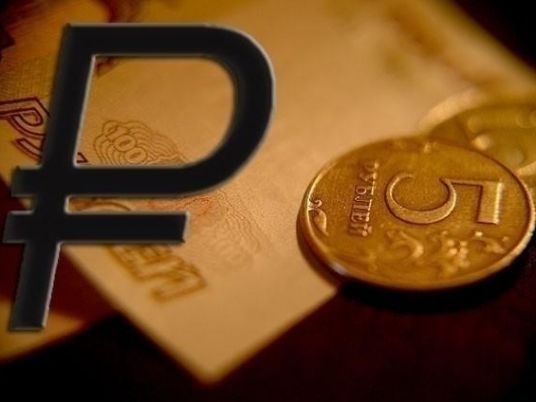
The Russian ruble is set for continuing decline, analysts said, as the low price of oil squeezes the country's economy.
The ruble has already dropped about 45 percent against the dollar this year. But economists said that it could fall as low as 80 to the dollar, a level it has only once reached on Dec. 16. Currently it is at about 70 to the dollar.
Falling oil prices were the main driver behind the decline, economists said, and they warned that the economic challenges related to falling oil prices may well continue until 2018 before they stabilize.
The Russian economy is in recession, having contracted by 4.6 percent in the second quarter, and is expected to stay there for at least two years. "The recent fall in commodity prices and further depreciation of currencies exacerbate an already unfavorable domestic economic environment," Marie Diron, a senior vice president at Moody's, said in a statement on August 28.
"Slower growth in China makes a significant rebound in commodity prices in the near term unlikely. A more prolonged period of low commodity prices will lead to muted export revenues and investment for commodity-exporting G20 economies," she said.
Economic Development Minister Alexei Ulyukayev said on Friday that a decline in oil prices and a new phase of the weakened rouble may intensify inflation, currently at about 16 percent. This will curtail purchasing power and also limit any recovery in consumer demand. He pointed to a quicker decline in investment and construction pace. Private savings was on the rise, indicating lower consumer confidence.
In July, the economic sectors showing a negative trend included construction (minus 0.9 percent), investments (minus 1.2 percent) and paid services (minus 0.3 percent).
According to Ulyukayev, the ongoing devaluation of rouble is linked closely to the dynamics of oil prices. He told Interfax Agency on Friday that while the estimates of the average oil price in 2016 were at around $55 per barrel that represented a “conservative scenario.” Ulyukayev hinted that, as a result, the baseline projections for Russia’s economic growth in 2016-2018 will continue to be adjusted. He did not rule out the possibility of it temporarily sliding close to $40.
But the ruble may drop ahead of a further decline in the price of oil, according to projections released by SberBank last week.
With the oil price reaching about $40 per barrel, the ruble will slip to 75 to the dollar, forecast Mikhail Delyagin, director of the Institute of Globalization Issues. A senior Russian economist, Vladimir Tikhomirov, goes a step further: Given the possibility that the price of a barrel of Brent oil could drop below $40, the ruble could plunge to 80 to the dollar.
A study released by Russia’s Central Bank on 19 August 2015 draws attention to a lack of appropriate adjustments to transitions from economic projections made on oil prices around $100-110 per barrel to what is now fifty percent lower than those earlier estimates.
“The price of oil in the world market remains the one key parameter, and it affects all spheres of Russian economy and finance,” financial analyst Andrey Movchan told Anadolu Agency. “A rise in foreign exchange reserves depends on the rate with which oil prices change.” Movchan sees a direct proportionality between the fluctuation in GDP and the fluctuation in oil prices.
Because measures to reduce the economy’s dependence on oil have been insufficient, the price of crude continues to have determinant effects, Movchan continued. What Russia requires is consistent growth in other sectors too. Russia has to learn from Norway how, despite cutting its oil production, the latter has still managed to increase its GDP, Movchan pointed out.
The panic in the markets will grow, financial analyst Timur Nigmatulin told the press on Tuesday. "For Russia, the end of the year forecasts are most disappointing. Public sector enterprises and private companies need to pay foreign currency debts. This requires them to buy hard currency in the domestic market to $10 billion per month, another factor which will continue to push the exchange rate down."



